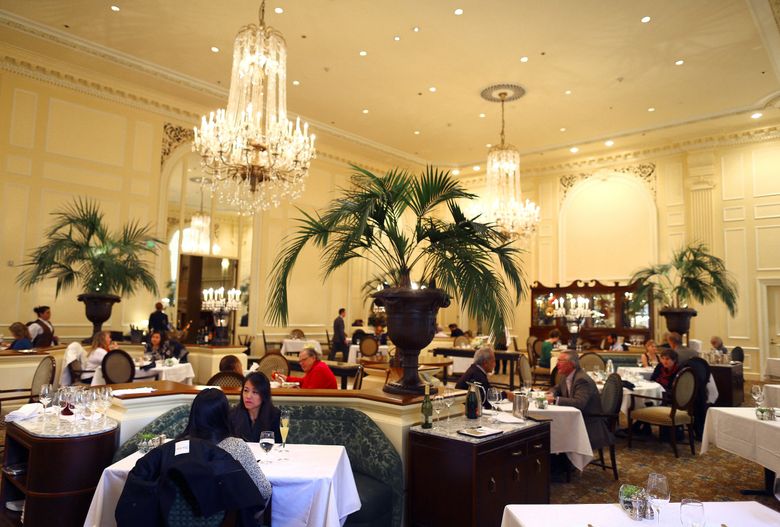Asian Fusion Restaurant: A Distinct Dining Experience in the Heart of Islamabad
Asian Fusion Restaurant: A Distinct Dining Experience in the Heart of Islamabad
Blog Article
Savor Genuine Oriental Food With a Pan-Asian Twist for a Cooking Journey
Getting started on a cooking trip through genuine Eastern cuisine, enhanced with a Pan-Asian twist, provides an unique chance to discover the rich tapestry of tastes that define the region's varied culinary customs. As you contemplate these enticing meals, think about the cultural stories and historical impacts that shape them, each bite offering a tale waiting to be found. Chinese food Islamabad.

Discovering Pan-Asian Flavors
In the realm of worldwide gastronomy, Pan-Asian food attracts attention for its impressive variety and the unified interplay of flavors from numerous Eastern cultures. This cooking method celebrates the distinct active ingredients and rich traditions located throughout the continent, producing a tapestry of preferences that is both enjoyable and fascinating. Key to Pan-Asian cuisine is its capacity to balance contrasting flavors-- wonderful, salted, spicy, and sour-- while highlighting the freshness and high quality of each ingredient.
From the umami-rich soy sauce of Japan to the intense chili peppers of Thailand, Pan-Asian cuisine provides a comprehensive combination of flavors. These elements are typically integrated in innovative methods, improving recipes with layers of complexity. As an example, making use of great smelling herbs such as lemongrass and cilantro, typical in Vietnamese and Thai food, adds a revitalizing illumination to dishes, while the incorporation of coconut milk supplies a velvety, rich structure.
The emphasis on fresh produce and aromatic flavors guarantees that each meal is not only a banquet for the taste yet also for the detects. Pan-Asian food invites diners to start a cooking trip, exploring the large and varied landscapes of Asian gastronomy with every bite.
Combination Meals to Try
While Pan-Asian food is celebrated for its traditional tastes, the modern-day culinary landscape is increasingly accepting combination meals that blend these timeless elements with impacts from various other regions. This innovative approach not just honors the rich heritage of Eastern cooking arts yet additionally presents novel taste experiences that appeal to contemporary tastes.
A prime instance of such a combination meal is the Korean-Mexican taco, where marinaded bulgogi beef is covered in a warm tortilla, covered with kimchi and a hot gochujang-infused salsa. This combination weds the bold, tasty tastes of Korea with the lively, fresh aspects of Mexican food. Likewise, sushi burritos have obtained appeal, integrating the delicate creativity of Japanese sushi with the hearty, hand-held convenience of a burrito, typically including fusion active ingredients like tempura shrimp and avocado with a drizzle of wasabi mayo.
An additional noteworthy recipe is Thai curry ramen, which instills the creamy, fragrant flavors of Thai curry right into the calming brew of traditional Japanese ramen, producing an unified blend that tantalizes the senses. These combination dishes expand past mere uniqueness; they represent a culinary dialogue between societies, motivating exploration and technology in the world of Pan-Asian food.
Important Active Ingredients and Flavors
To absolutely appreciate Pan-Asian food, one need to understand the necessary components and seasonings that develop its structure. This diverse culinary design attracts from an abundant tapestry of Asian practices, employing an unified blend of structures and flavors.
Fragrant aspects are pivotal, with lemongrass, garlic, and ginger being ubiquitous across various Pan-Asian recipes. These components provide an aromatic base that improves the intricacy of flavors. Flavors such as star anise, cardamom, and cinnamon visit homepage present warmth and character, resembling influences from regions like China and India.

Food Preparation Strategies and Tips
Grasping the art of Pan-Asian food calls for knowledge with its distinct cooking techniques, each adding to the dynamic tapestry of flavors this cooking practice is commemorated for. Central to these approaches is the stir-fry, a fast food preparation strategy that protects the nutritional integrity and brilliant colors of components. Making use of a wok, the stir-fry method enables even warmth distribution, important for accomplishing the characteristic structure and taste equilibrium of Pan-Asian dishes.
One more essential method is steaming, especially prevalent in Chinese food. This mild method keeps the all-natural flavors and nutrients of active ingredients, making it suitable for seafood and veggies. Dumplings, a cherished staple, frequently gain from steaming, resulting in soft, delicious structures.
Barbecuing, likewise essential, presents smoky midsts to meals such as Korean bulgogi or Japanese yakitori (pan asian restaurant Islamabad). This method frequently entails seasoning components, enabling tastes to permeate deeply before food preparation over an open flame or warm plate
Last but not least, understanding the art of balancing tastes-- sweet, sour, salted, bitter, and namaste india umami-- is essential. Effectively layering these aspects can boost a recipe from average to remarkable, offering a complicated and satisfying cooking experience that symbolizes the essence of Pan-Asian cuisine.
Eating Experiences Worldwide
Around the world, Pan-Asian food uses an unequaled dining experience, celebrated for its rich tapestry of flavors and vibrant discussions. This cooking sensation has transcended cultural limits, capturing the hearts and tastes of food fanatics worldwide. In cosmopolitan cities fresh York, London, and Sydney, Pan-Asian dining establishments offer as fusions where cooking customs from Thailand, Japan, China, and past converge, offering diners with an eclectic mix of meals that highlight the area's variety.
The worldwide appeal of Pan-Asian food depends on its ability to supply both credibility and technology. Cooks skillfully wed conventional ingredients such as lemongrass, soy sauce, and miso with modern strategies, resulting in recipes that are both acquainted and refreshingly new. This combination enables diners to start a culinary journey that respects heritage while welcoming modernity.
Additionally, dining experiences are raised with attentively developed environments that mirror the principles of Pan-Asian looks. From minimalist Japanese-inspired insides to lively Thai-themed rooms, each dining establishment provides a distinct setting that complements the culinary offerings. Therefore, patrons are not new york pizza just consuming a dish but partaking in a social experience, making Pan-Asian dining a truly worldwide sensation.
Final Thought
The expedition of Pan-Asian cuisine provides an extensive understanding of the detailed interplay of flavors and cooking practices throughout Asia. By welcoming fusion meals such as Thai curry ramen and sushi burritos, the culinary journey not only highlights the versatility of conventional components but additionally showcases cutting-edge modern-day strategies. This gastronomic journey, enriched by crucial spices and cooking methods, supplies an one-of-a-kind chance to value the multiculturalism and cooking artistry that specify Pan-Asian cuisine on an international range.
Embarking on a cooking journey with authentic Asian food, enhanced with a Pan-Asian spin, supplies an one-of-a-kind possibility to explore the rich tapestry of flavors that specify the region's varied cooking customs.In the realm of global gastronomy, Pan-Asian food stands out for its remarkable variety and the harmonious interplay of flavors from different Asian cultures. Key to Pan-Asian food is its capacity to stabilize contrasting flavors-- pleasant, salty, spicy, and sour-- while highlighting the freshness and top quality of each active ingredient.

Report this page